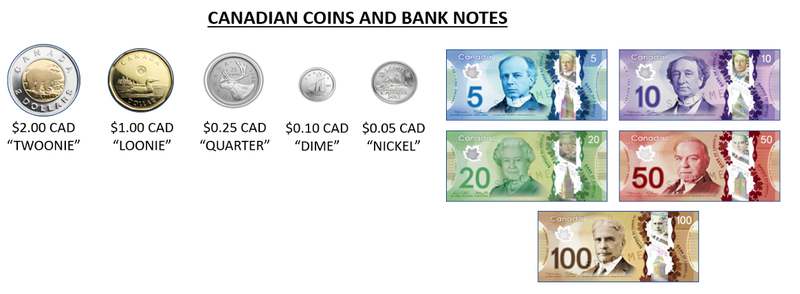It is important students bring these documents and remember to keep these documents safe and accessible on the plane and at the homestay.
- Contact information of homestay family: Full name, address, and phone number
- Contact information of the homestay agent/representative
- Airline Tickets
- Passport (Your passport must be valid for at least six months after your intended departure date)
- Birth certificate, Study permit and Certificat d’acceptance du Québec
- Letter of Acceptance (Admissions letters issued by the EMSB to apply for your CAQ and Study Permit)
- Most recent school report card and certified translated version in English or French
- Immunization Record (vaccination booklet)
- Prescriptions for any medication you are required to take
We recommend that copies of the most important documents are made, like the student passport, and be given to the homestay family/guardian. Should the originals be lost or misplaced, the copies will facilitate in obtaining replacements.
Students taking prescribed medication for a health condition should bring enough to last the first month of stay. Remember to bring the doctor’s prescription as it is official proof the medication was prescribed and will help with the prescription renewal with a doctor in Montreal. While most medications are available in Canada, it may take time to obtain extended prescriptions from a health provider.
Montreal celebrates four seasons in a calendar year. It is important to bring or purchase appropriate clothing to ensure you are always dressed accordingly to the weather.
Winter
Weather: Cold, often freezing temperatures (-25 to -40 o C) with snow and wind.
- Winter coat: Insulated, water-resistant or waterproof, with a warm lining.
- Layers: Thermal or fleece-lined clothing to keep warm, such as sweaters and long-sleeve shirts.
- Pants: Thick, warm pants like wool or thermal-lined.
- Accessories: Gloves, scarves, and warm hats are essential to protect extremities from cold and wind.
- Footwear: Insulated, waterproof boots to prevent your feet from getting wet or cold in snow.
- Thermal socks: Wool or other warm, moisture-wicking socks
Spring
Weather: Mild temperatures, with occasional rain and some windy days.
- Light jacket or coat: A medium-weight jacket or trench coat to stay warm during cooler days.
- Layers: T-shirts, long-sleeve shirts, and lightweight sweaters to adjust to fluctuating temperatures.
- Pants: Jeans, leggings, or lighter fabrics like cotton or linen pants.
- Footwear: Waterproof shoes or boots to manage spring rain, or casual sneakers for dry days.
- Accessories: A lightweight scarf or hat may be useful during chillier mornings.
Summer
Weather: Warm to hot temperatures, often sunny and dry.
- Light, breathable clothing: T-shirts, tank tops, shorts, skirts, and dresses made from cotton, linen, or moisture-wicking fabrics.
- Sunglasses: To protect eyes from the sun.
- Footwear: Comfortable sandals, sneakers, or breathable shoes.
- Hats: Wide-brimmed hats or caps to shield from the sun.
- Swimwear: For swimming or water activities.
- Sun Protection: Don’t forget sunscreen to protect your skin from harmful UV rays.
Fall
Weather: Cooler temperatures, with the chance of rain and windy conditions.
- Layered clothing: A mix of long-sleeve shirts, sweaters, and light jackets. A hoodie or sweatshirt can be a great mid-layer.
- Fall coat or jacket: A mid-weight jacket, like a denim jacket, leather jacket, or a wool coat for chillier days.
- Pants: Jeans, leggings, or thicker fabrics like corduroy.
- Footwear: Waterproof boots or shoes for rainy weather, and sneakers for casual wear.
- Accessories: A scarf, gloves, or hat if temperatures dip lower, and an umbrella for rain.
Canada's electrical supply and electrical outlets are powered are 120 Volts and 60 Hertz.
Click here to be directed to a website with the different voltages around the world listed by country.
Ensure any equipment being brought oversees are compatible with our electrical supply. Bring a power adapter/converter to charge any electronic devices, like a laptop or mobile phone. Regardless, there are many stores in Montreal selling adapters and converters including Wal-Mart, airports and most of our local pharmacies.
Canada’s currency is the Canadian dollar (CAD). While credit cards are almost accepted everywhere, it is always a good idea to carry some cash on hand (bills and coins) while travelling in Montreal. Some stores will only accept cash, and parts of our public transport system will not provide change (city bus). It is advised to carry cash with when you arrive and it is recommended to bring around $250.00CAD.
Below are images of our Canadian Currency and their names:
Becoming familiar with the terminology of the coins and their values will take time.

Canada stopped producing the one-cent, also known as a penny, in May 2012, and merchants no longer accept the penny since February 2013.
When paying with cash, any purchase not ending in a five or a zero will be rounded up or down. If an item costs $1.01 or $1.02 the total price will round down to the $1.00. If an item costs $1.03 or $1.04, it rounds up to $1.05. For any electronic transactions (credit card and debit card), cheques, and money orders, the price remains the unchanged and does not round up or down.
To determine the value of your home currency in Canadian currency visit Currency Converter- Bank of Canada.

